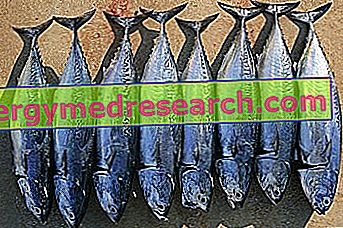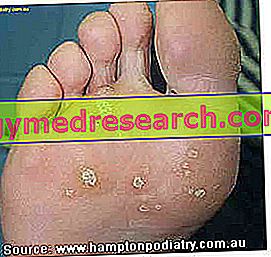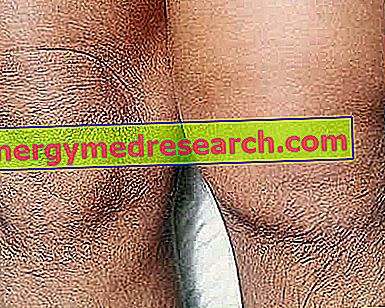Red Foods
Natural foods of red color
Tomato, strawberry, red orange, watermelon, cherry, red grapefruit, raspberry, cranberry, currant, Goji berries, red cabbage, figs, radish, red pepper, pomegranate, red radicchio, red potatoes, red onion and red beet.

Properties of Red Vegetables
Anti-tumor and anti-atherogenic
The red fruits and vegetables are characterized by the presence of two substances with high antioxidant action: anthocyanins and lycopene (both phytochemicals or phytoalexins).
Secondly, these foods provide good amounts of vitamin C, folic acid, potassium, magnesium and other polyphenolic antioxidants (in addition to anthocyanin flavonoids).
Sources of lycopene
Lycopene is a molecule belonging to the carotenoid family.
The carotenoids, in turn, are molecules that belong to the group of the liposoluble pro-vitamin A.
Fruits and vegetables reach the maximum amount of lycopene at full maturity. Cooking, which when it is too intense and prolonged impoverishes food, if moderate and with the addition of olive oil, makes lycopene more absorbable by the body.
In some statistical analyzes it was noted that the high consumption of foods containing lycopene (tomatoes, red oranges, cherries, etc.) prevents many types of cancer, cataracts and some neurodegenerative and cardiovascular diseases, as well as slowing down cellular aging processes and cutaneous.
The three products that contain more lycopene are:
- Tomatoes: they are the main source of lycopene
- Blood orange
- Strawberry
- Cherries.
Functions
- Antioxidant function: acts on lipoproteins (the molecules responsible for transporting fats in the blood) and on cell membranes, where it "captures" free radicals
- Prevention of atherosclerosis (due to high blood cholesterol levels)
- Prevention of prostate, ovarian and breast cancer
- Treatment of blood vessel diseases
- Reduction of capillary fragility
- Support of the visual function.
Therefore, red group foods reduce the risk of getting cardiovascular diseases and tumors.
Sources of anthocyanins
Anthocyanins or anthocyanins are natural colorants responsible for the red hue (but also purple or blue, depending on the type), which belong to the flavonoid family.
- The most abundant red anthocyanins in the foods of the Western diet are: cyanidin and perargonidine.
They are contained in the leaves, flowers, fruits and roots.
Unlike lycopene and carotenoids in general, anthocyanins dissolve mainly in water and not in fats.
Curiosity
Anthocyanins change their color based on the surrounding pH.
With an acid pH they have a red hue, while with a basic pH they take on a blue or violet appearance.
Anthocyanin red E163 is a food coloring based on anthocyanins.
Functions
- Antioxidant and antiradical
- They fight the diseases of the spare
- Limit the damage of metabolic pathologies
- Contrast the capillary fragility
- They hinder systemic inflammation
- Reduce cardiovascular and tumor risk.
Magnesium sources
Red fruits and vegetables are also characterized by a good presence of magnesium.
Functions
- It is involved in the cellular metabolism of peptides and carbohydrates
- Regulates nerve transmission
- It helps modulate blood pressure
- Promotes an alkaline PRAL, improving the acid base balance.
Magnesium absorption is compromised by the anti-nutritional action of phytic acid and oxalic acid. For this reason, absorption increases with cooking, responsible for the degradation of phytates and oxalates.
It is therefore advisable to also eat cooked red and not only raw vegetables.
Sources of potassium
Vegetables and red fruit contain a significant amount of potassium.
Functions
- It allows the rhythmicity of the heart
- It is necessary for the nervous and muscular impulse
- Combats hypertension
- Maintains the acid base balance and counteracts water retention.
Sources of folic acid
Red foods also boast a good percentage of folic acid.
Functions
- By fighting hyperhomocysteinemia, folates prevent the vascular complications of atherosclerosis
- They are at the basis of fetal nerve development and prevent developmental defects (for example, spina bifida)
- Contribute to the production of red blood cells
The nutritional insufficiency of folate can trigger pernicious anemia and some fetal deformations.
Being heat-labile, the folates degrade with cooking.
Sources of vitamin C
Strawberries, cherries, peppers and chillies, red oranges etc. also contain high amounts of vitamin C.
Functions
- It is a powerful antioxidant
- Allows the production of collagen
- Supports the immune system
- Increases the absorption of ferrous iron (Fe 2+)
- It helps maintain the integrity of blood vessels
- Promotes healing.
Red Recipes
Stuffed tomatoes
Ingredients for 4 people)
- 4 medium ripe tomatoes
- 200 g of mozzarella
- 100 g of pitted green olives
- 80 g of grated Parmesan cheese
- 50 g of parsley
- 50 g of grated bread
- Some basil leaves
- Extra virgin olive oil
- Salt and black pepper.
Preparation
- Wash and cut the tomatoes into equal parts and remove the seeds.
- Chop the parsley, basil, capers and olives and add the Parmesan, breadcrumbs, salt and pepper.
- Mix everything with a glass of oil.
- Stuff the tomatoes with this mixture and place them in a baking dish covered with baking paper.
- Cook at 180 degrees for about fifteen minutes.
- Slice the mozzarella and place a slice on top of each stuffed tomato, then bake again until the mozzarella has melted.
Red Salad
Ingredients for 4 people)
- 6 radishes
- 4 red beets
- 3 red oranges
- 1 fennel
- Fresh mint
- Balsamic vinegar.
Preparation
- Peel and boil the beets in abundant salted water; once cooked, let them cool and then cut them into julienne strips (with a string or match).
- Wash and cut the radishes into four parts.
- Wash and cut the fennel into thin slices.
- Peel and slice two oranges; squeeze a third one.
- Put all the ingredients in a bowl and season with the orange juice, balsamic vinegar and mint leaves.
Red Centrifuges
Summer Centrifuged (thirst quenching and purifying)
Ingredients for 4 people)
- 5 ripe tomatoes
- A bunch of asparagus
- Some celery leaves
- 1 lemon
- Pepper.
Preparation
- After washing and peeling the tomatoes, centrifuge them with asparagus and celery.
- Add a pinch of pepper and a few drops of lemon.
- Serve with two ice cubes.
Spring Centrifuged (energizing and anti-aging)
Ingredients for 4 people)
- 750 g of cherries
- 4 slices of watermelon
- 1 melon
- Lemon
- A few mint leaves.
Preparation
- Wash and remove the cherries from the pits and centrifuge them together with the melon and watermelon pulp.
- Add a few drops of lemon and mint leaves.
- Serve with two ice cubes.
Winter Centrifuge (delicate taste rich in mineral salts)
Ingredients for 4 people)
- 4 red oranges
- 4 red beets
- 2 cucumbers
- A bunch of parsley.
Preparation
- Centrifuge the beets with cucumbers.
- Squeeze the oranges.
- Add the centrifuged to the orange juice and add a few parsley leaves.



